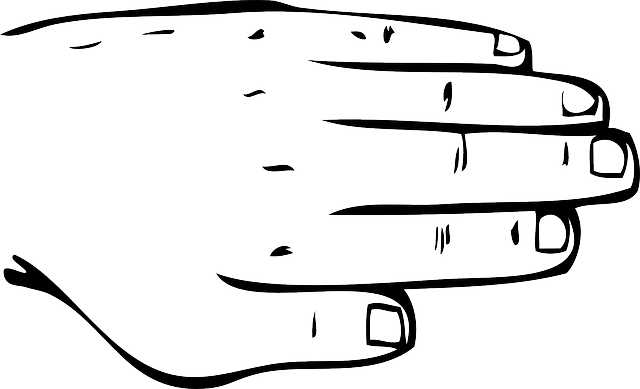Skin tags, caused by friction or irritation, are small growths that can be removed for cosmetic reasons. A dermatologist specializing in skin tag removal offers personalized solutions using methods like freezing, cutting, or burning under local anesthesia. Their expertise includes managing complications, preventing recurrence, and providing tailored aftercare guidance. Consulting a dermatologist ensures effective, precise results with minimized side effects and promotes healthy skin recovery.
Looking to get rid of unsightly skin tags? A dermatologist offers expert care and personalized treatment plans for safe and effective removal. Understanding different types and causes of skin tags is key, as a specialist can advise on the best approach. From laser therapy to freezing treatments, modern techniques provide solutions. Learn about the recovery process and essential aftercare tips for optimal results, ensuring confidence in your smooth, tag-free skin. Discover why seeing a dermatologist is a smart choice for eliminating these common skin concerns.
- Understanding Skin Tags: Causes and Types
- The Role of a Dermatologist in Safe Removal
- Personalized Treatment Approaches for Effective Results
- Recovery and Aftercare Tips for Skin Tags Removal
Understanding Skin Tags: Causes and Types
Skin tags, also known as acrochordons, are small, soft skin growths that typically appear as thin, tiny projections or lumps on various parts of the body. They are usually harmless and often not a cause for concern. However, many individuals seek a dermatologist’s assistance for their removal due to aesthetic reasons or when they become irritated or uncomfortable.
The causes of skin tags can vary, with the primary factor being friction or constant irritation against the skin. They frequently develop in areas where skin rubs against itself, such as the neck, armpits, groin, and ankles. Skin tags are generally harmless, but certain types may be more prominent or unsightly. Some individuals might have multiple skin tags of varying sizes, while others may notice just one or a few. Understanding these growths and their triggers is essential for effective management and treatment by a dermatologist, specializing in providing personalized solutions for skin tag removal.
The Role of a Dermatologist in Safe Removal
When it comes to safely and effectively removing skin tags, a dermatologist is an invaluable resource. Skin tags, those small, harmless growths on the skin, may seem like a mere cosmetic concern, but their removal often requires professional guidance. Dermatologists are medical specialists trained in diagnosing and treating various skin conditions, including skin tags. They have the expertise to differentiate between benign skin tags and more concerning growths, ensuring accurate identification.
A dermatologist’s personalized treatment approach is crucial for safe removal. Depending on the size, number, and location of the skin tags, they may employ various methods such as freezing, cutting, or burning. These procedures, when performed by a qualified dermatologist, are generally quick, pain-free, and carried out under local anesthesia. Their expertise also lies in addressing potential complications, providing aftercare instructions, and offering long-term solutions to prevent the recurrence of skin tags.
Personalized Treatment Approaches for Effective Results
When visiting a Dermatologist for skin tags removal, one of the key benefits is their ability to offer personalized treatment approaches. Unlike over-the-counter solutions that may not be suitable for everyone, dermatologists can assess your unique skin condition and recommend the most effective methods. This tailored approach considers factors like the size, number, and location of skin tags, as well as your overall health and tolerance for certain procedures.
For instance, a dermatologist might choose to remove skin tags through surgical excision, cryotherapy (freezing), or laser treatments, each with its own advantages. A personalized plan ensures that the chosen method aligns best with your needs, offering more precise and faster results while minimizing potential side effects. This individualized care is particularly important for sensitive areas like the face, where a dermatologist can expertly navigate the intricate skin structures to achieve optimal outcomes.
Recovery and Aftercare Tips for Skin Tags Removal
After a dermatologist removes skin tags, proper recovery and aftercare are essential to maintain healthy skin. It’s crucial to follow their expert advice regarding post-procedure care. This usually involves keeping the treated area clean and dry, avoiding strenuous activities that might cause irritation, and using gentle, non-irritating skincare products.
Over-the-counter pain relievers can help manage any mild discomfort. It’s important to steer clear of scratching or picking at the site, as this could lead to infection or scarring. Most skin tags removal procedures leave minimal scarring, but proper aftercare ensures these marks are minimized. Patience is key, as it may take a few days for the treated area to fully heal and any redness or swelling to subside.
When it comes to removing skin tags, consulting a dermatologist is key. Their expertise ensures safe and effective treatments tailored to your specific needs. By understanding the causes and types of skin tags, dermatologists employ personalized approaches that deliver optimal results. With proper recovery and aftercare tips, you can enjoy smooth, tag-free skin. Trusting a professional for this procedure guarantees a comfortable experience and long-lasting solutions.
